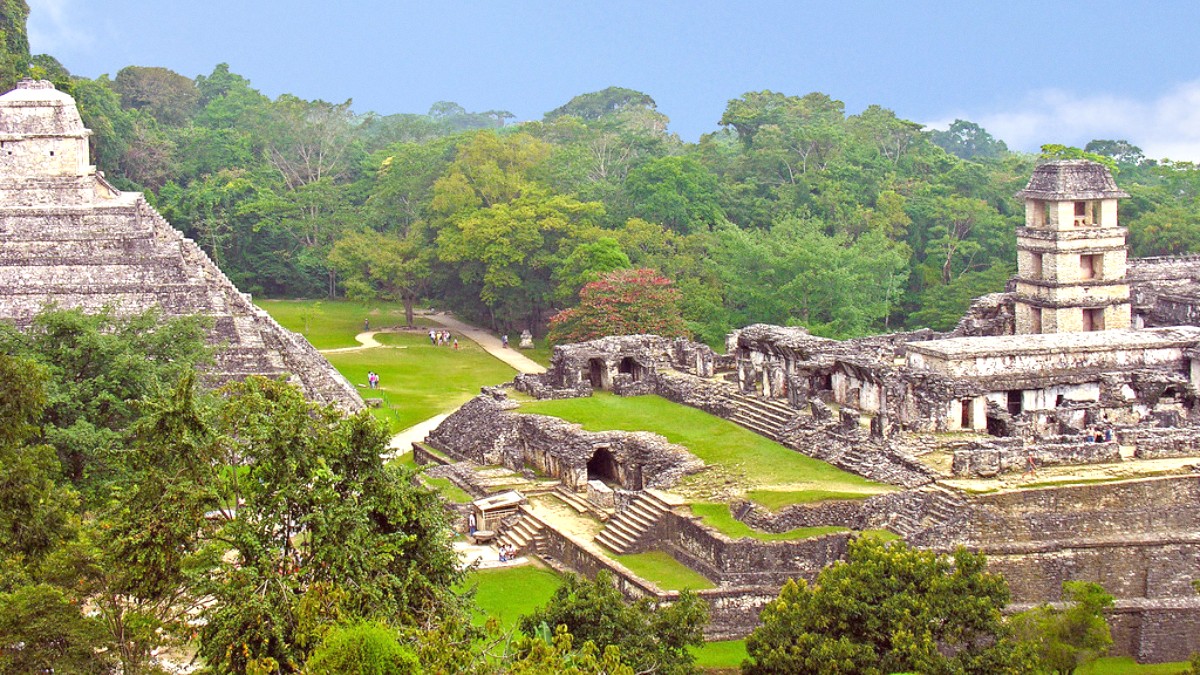
Tabasco And Chiapas, Mexico
The region experiences a tropical rainforest climate, with high temperatures and significant humidity throughout the year. This climate divides into two main seasons: the dry season and the rainy season, each offering a distinct experience.
Dry Season (November to May): This period has the most comfortable conditions for exploring. Average daily temperatures range from a pleasant 70°F (21°C) to a warm 95°F (35°C). Mornings are cooler, offering ideal conditions for early visits to the ruins. This season sees significantly less rainfall. Skies often remain clear and sunny, making outdoor activities more enjoyable. Humidity levels remain high, as expected in a tropical area, but they are noticeably lower than during the rainy season. This reduction in humidity makes extended periods outdoors more bearable.
Plan your Palenque trip carefully to align with your comfort level for heat, humidity, and crowds. Dry season visits offer more comfortable exploration conditions.
High Season (December to February, Easter Week, July-August): Cooler, drier weather makes for ideal exploration. Tourist services operate at full capacity. Expect higher prices and larger crowds, especially around popular structures. Easter week and mid-summer months also draw significant domestic tourism.
Shoulder Season (March-April, September-November): Fewer crowds and potentially lower prices for lodging and tours. March and April offer good weather before intense heat and rain begin. September and October fall within peak hurricane season, bringing prolonged, heavy rains.
Low Season (May-June, September-October): Lowest prices and fewest crowds. The jungle becomes incredibly lush. Anticipate intense heat and very high humidity. Daily heavy rain showers can affect outdoor activities, making trails slippery and potentially causing localized flooding. The risk of tropical storms is present.
High
Ideal weather, full tourist services.
Higher prices, larger crowds.
Moderate
Fewer crowds, potential savings.
Can be very hot, hurricane season.
Low
Lowest prices, intimate experience, lush jungle.
Intense heat, high humidity, daily heavy rain.
Visit early morning during the dry season (November to February). Cooler temperatures and lower humidity make walking among the ruins comfortable.
The dry season offers the best conditions for jungle treks, with less mud and fewer mosquitoes. If you trek during the rainy season, anticipate wet, muddy trails and a need for excellent insect protection.
Clearer water, less sediment. Access roads and paths less muddy.
Still impressive and powerful. Trails can be slippery.
Waterfalls are beautiful year-round, but dry season allows for easier access and clearer waters for swimming.
Road conditions to some waterfalls (e.g., Roberto Barrios) improve in the dry season.
Lower humidity in dry season makes outdoor excursions more comfortable.
Mexico maintains a straightforward entry policy for many nationalities, but specific documentation is always needed.
Citizens from countries like the United States, Canada, the United Kingdom, countries within the Schengen Area (European Union), Australia, New Zealand, Japan, and South Korea generally do not need a visa for tourist stays lasting up to 180 days. A valid passport makes for sufficient entry. Citizens from other countries may need a visa before traveling. Check the official website of the Mexican Embassy or Consulate in your country of residence for specific requirements. IVisa and VisaHQ can assist with the application process.
Beyond the FMM card fee (if applicable), Mexico imposes no specific entry fees for tourists. The immigration procedure comprises presenting your valid passport and FMM card. The officer stamps your FMM card and specifies the authorized length of your stay (up to 180 days). Ensure you receive the FMM card and check the stamped date.
Costs vary by travel style. The Mexican Peso (MXN) is the official currency. ATMs are in Palenque town, offering better exchange rates. Larger hotels accept credit cards, but many local businesses prefer cash. Carry small denominations for purchases, street food, and tips.
Local risks deserve your attention and preparation.
Tap water is generally not safe for drinking. Stick to bottled water or purified water from reputable sources. Consider a Portable water filter for added safety.
Choose busy eateries with high customer turnover. Ensure food is well-cooked and hot. Use Hand sanitizer before eating.
Carry Anti-diarrheal medication (Imodium) and oral rehydration salts for traveler's diarrhea. Use Insect repellent (Repel 100) with DEET/picaridin for mosquito-borne illnesses. Treat clothing with Permethrin (Sawyer Permethrin).
A well-stocked First aid kit is a practical consideration.
Include basic pain relievers (Ibuprofen, Acetaminophen), Band-aids, antiseptic wipes, anti-itch cream, and blister treatment. A small Adventure Medical Kit makes for a good base.
The tropical sun is intense. Apply high-SPF, waterproof Sunscreen (La Roche-Posay Anthelios Melt-in Milk Sunscreen SPF 60) regularly. Wear a Wide-brimmed hat and Sunglasses. Stay hydrated and seek shade during peak sun hours (11 AM to 3 PM).
Palenque town has basic clinics and a small public hospital. For serious emergencies, evacuation to Villahermosa or Tuxtla Gutiérrez may be needed.
Dial 911 for all general emergencies (Police, Ambulance, Fire) nationwide in Mexico.
Highly recommended. World Nomads, SafetyWing, and Insubuy are reputable providers. Policies consider comprehensive coverage for medical emergencies, evacuation, trip interruption, and lost luggage.
Palenque town is generally safe for tourists in main areas. Petty crime like pickpocketing can occur in crowded places. Be aware of your surroundings and secure valuables. Avoid walking alone in unlit or isolated areas, especially at night.
Be prepared with critical contact information.
Dial 911 for Police, Ambulance, or Fire (nationwide).
Keep your country's embassy or nearest consulate contact info on hand.
Share your hotel details and itinerary with trusted contacts at home.